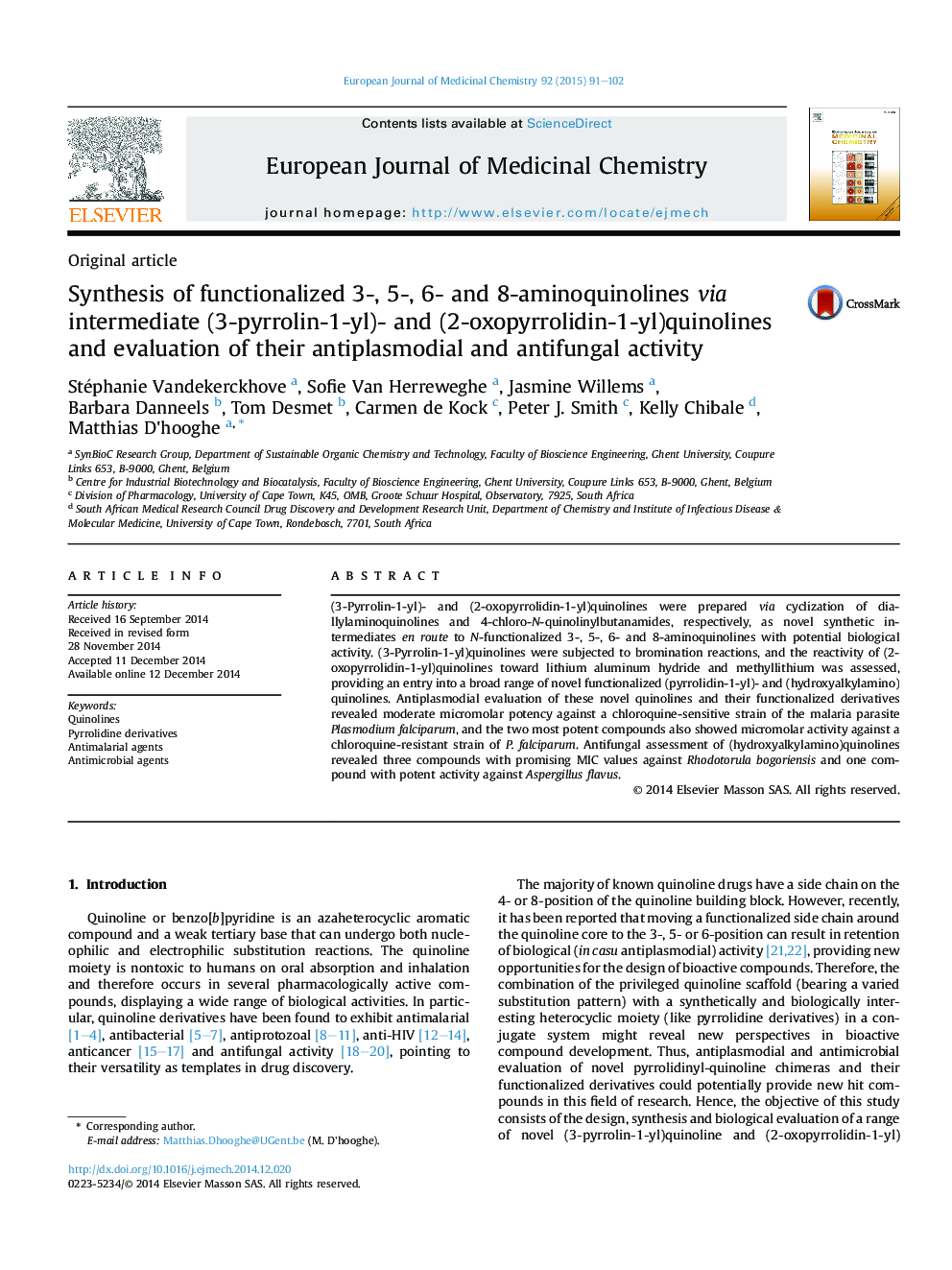| کد مقاله | کد نشریه | سال انتشار | مقاله انگلیسی | نسخه تمام متن |
|---|---|---|---|---|
| 1393981 | 1501124 | 2015 | 12 صفحه PDF | دانلود رایگان |
• Synthetic exploration of 3-, 5-, 6- and 8-aminoquinolines.
• Novel (3-pyrrolin-1-yl)- and (2-oxopyrrolidin-1-yl)quinoline building blocks.
• Moderate antiplasmodial but significant antifungal activities.
(3-Pyrrolin-1-yl)- and (2-oxopyrrolidin-1-yl)quinolines were prepared via cyclization of diallylaminoquinolines and 4-chloro-N-quinolinylbutanamides, respectively, as novel synthetic intermediates en route to N-functionalized 3-, 5-, 6- and 8-aminoquinolines with potential biological activity. (3-Pyrrolin-1-yl)quinolines were subjected to bromination reactions, and the reactivity of (2-oxopyrrolidin-1-yl)quinolines toward lithium aluminum hydride and methyllithium was assessed, providing an entry into a broad range of novel functionalized (pyrrolidin-1-yl)- and (hydroxyalkylamino)quinolines. Antiplasmodial evaluation of these novel quinolines and their functionalized derivatives revealed moderate micromolar potency against a chloroquine-sensitive strain of the malaria parasite Plasmodium falciparum, and the two most potent compounds also showed micromolar activity against a chloroquine-resistant strain of P. falciparum. Antifungal assessment of (hydroxyalkylamino)quinolines revealed three compounds with promising MIC values against Rhodotorula bogoriensis and one compound with potent activity against Aspergillus flavus.
Figure optionsDownload as PowerPoint slide
Journal: European Journal of Medicinal Chemistry - Volume 92, 6 March 2015, Pages 91–102
